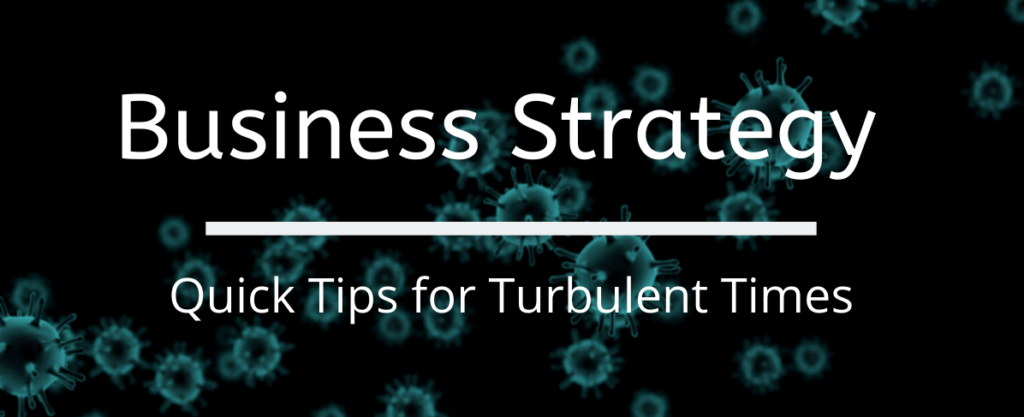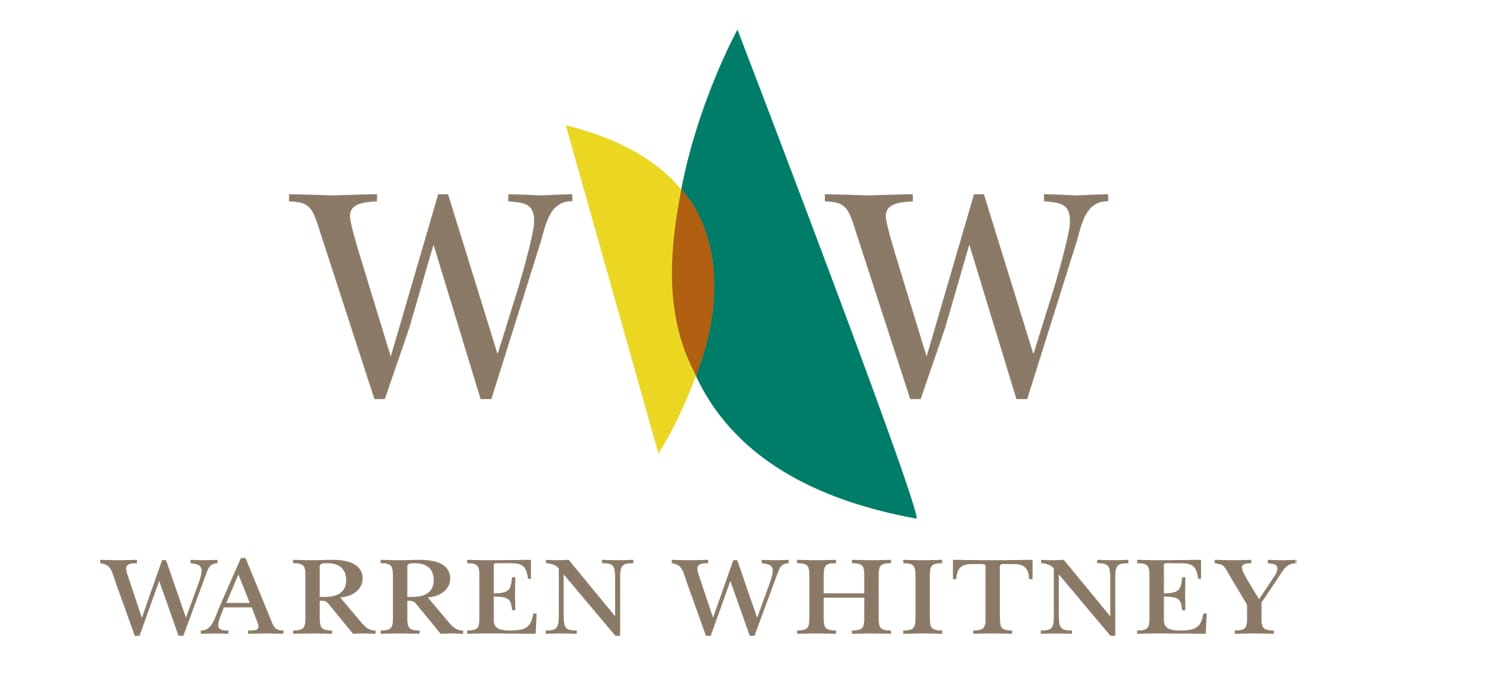COVID-19 Strategy: Why Talking to Your Banker Now Is Important

You heard it here first: Your fears and concerns are valid, and the anxiety and stress about keeping your business afloat during the COVID-19 pandemic is legitimate and understandable.
If there were easy answers, or answers at all right now, you would most likely be getting them from all different angles. The entire country is in a state of limbo, and not many people thrive on uncertainty especially when it relates to the well-being of employees, businesses, and families.
How is it possible that there is so much demand for your product or service at the moment, but you are not even able to sell it? Though bankers are not therapists, it is appropriate to tell you that IT IS OK TO FEEL ANXIOUS RIGHT NOW!
So what is the best approach to deal with your banking partner and anxieties around the health of your company during a time like this? Below are a few points that might help you work through this time with your banker:
#1) Let’s talk!
Very simply, pick up the phone and call your banker (who probably should have proactively already called you by now anyway). The bank wants to hear from you.
As bankers, we often believe that we know exactly what is going on in the market. And while we are sometimes correct, we may not know exactly what is going on with YOUR market. We want to hear about your struggles, concerns, and outlook.
And make sure to interview your banker as well. Like you, our worlds are changing very rapidly, and guidance from Federal regulators is pouring in daily. It is important for you to have an honest conversation with your banker about their desire to continue to work through customer cash flow challenges, the bank’s ability to handle a downturn, and if new lending is a possibility. Though answers might change quickly, continuing to have an honest relationship may help to assuage any fears that both parties are having.
#2) Plan
With the ever-changing environment in which we are living today, this might be the hardest action item. Determining a plan with so many unanswered questions can feel like trying to hit a moving target, but it is important to do the best you can.
Plans may include such things as understanding how to reduce costs if revenues fall, liquidating assets to maintain cash in an effort to fund operations, or identifying capital sources that will negate incurred losses.
From a banking standpoint, it could be beneficial to speak with your banker about the opportunity to temporarily move to interest-only monthly payments that relieve debt service obligations in the near-term, deferred payments for a specified period of time, or interest rate relief for an interim timeframe. Many well-capitalized banks are willing and able to work with the customers that are feeling the pains of the COVID-19 outbreak, and Federal regulators are currently encouraging collaboration between banks and businesses to help borrowers adjust to changes.
#3) Find alternatives
Both small and large business owners are in the process of searching for alternatives to supplement declining revenues related to the pandemic. From automakers manufacturing necessary ventilators to restaurants moving to takeout menus and even breweries and distilleries producing hand sanitizer, businesses are pivoting to alternative opportunistic revenue streams.
This might be the right time to find an alternative for your business and your workforce to further operations. From a financing standpoint, it could be a good time to visit the Small Business Administration’s website (www.sba.gov) to understand lending options that are not readily available by your bank but can provide temporary, flexible financing relief.
#4) Let’s talk (again)!
Keep communicating with your banker. Just because you had an initial call or meeting does not mean that you have to stop there. As the slowdown continues, your banker will be very interested in how you are handling the downturn and, hopefully, how the bank can help. It will also be important for you to hear bank and regulatory updates as they are available.
There may not seem like easy answers to all of our questions right now, but try to remember that your financial institution is a partner in your company. While we share in your present anxieties and uncertainties, many bankers want to work with business partners to weather the economic storm related to COVID-19.
Like us, understand that your stress is real but that frequent communication with your banker can help to establish the right plan for withstanding the pandemic while setting you up for future viability. Banks and businesses should always remember that we cannot win without each other.

Matt Paciocco is a Senior Vice President, Commercial Banker with Virginia Commonwealth Bank (VCB). Matt is passionate about working in a community bank that enables him to build strong relationships with his business customers and the surrounding communities. Matt has spent the last 15 years specializing in commercial banking and has positioned himself as a leading community banker in Richmond.
Editor’s note: Content provided by Virginia Commonwealth Bank (VCB). VCB is a Sponsor of VA Council of CEOs.
Learning How to Operate in Our New Business World

During the COVID-19 global health crisis, we are forced to adapt to a new way of life. Here’s how to start thinking strategically to best navigate through these uncharted waters.
DEVELOP A MULTI-LAYERED FINANCIAL PLAN.
You need to understand the financial implications and to act quickly. What happens if business reduction lasts for weeks? Or longer? Consider various “what-if” scenarios. Inquire about your business interruption insurance. Do you have an existing policy with dread disease coverage? Be sure to review the following:
- Expenses – by line item and due date
- Cash flow – How much cash do you have on hand? How much do you need?
- Accounts receivable and collection efforts
- Accounts payable — be in communication with your vendors regarding delays
BEWARE OF HACKERS AND CONSIDER CYBER SECURITY INSURANCE.
With companies quickly moving to remote work environments, hackers are aggressively looking to exploit any flaws. Be diligent and don’t click on links from unknown sources. It is not too late to talk to your broker about getting insurance for cyber security or social engineering policies.
REFER TO YOUR COMPANY “EMERGENCY OR DISASTER RECOVERY PLANS”.
This should include policies regarding:
- Remote work.
- Who is “essential personnel” to adequately keep the business running.
- Paid time off and how it can be handled. Employees can file for unemployment if their office is closed and they are not getting paid time off. They do not have to be in a terminated status to file for unemployment.
- Allowing employees to stay home if they are scared, at-risk or uncomfortable at work.
REMOTE WORK IS DIFFERENT FROM OFFICE WORK.
Employees need to set their own schedules and be able to deal with different distractions (e.g. kids, phone calls, etc.). Don’t underestimate the change and potential impact. Clearly communicate who employees should call with questions or issues, during and after work hours.
THINK CREATIVELY.
In these uncertain times, you may need to be creative. This will mean different things for different companies. Consider unique ways you can make your business stronger.
BRING THE WORK YOU DO TO THE DIGITAL FRONTIER.
How can your business adapt to offer services digitally? For example, on-line teaching classes, or offering webinars. The goal is to keep your business top of mind.
CONSIDER CLOUD ACCOUNTING SYSTEMS.
To allow for accounting data to be easily accessible, consider cloud-based accounting systems. In cloud computing, users access software applications remotely though the Internet. Remember to ensure adequate security protection.
KEEP WORKING.
Unless you have been asked not to work at all (e.g., some non-exempt positions), keep working, most likely from home. Utilize smart tools and practice healthy habits. Limit social engagement and leverage technology.
REMEMBER THE BASICS.
Password protection and current anti-virus systems are critical for remote devices, even if they are owned by the employee and not controlled by the company.
Companies need to consider whether remote users will be able to print or store any confidential information on their laptops or Home PCs. Tools are available that can prevent downloading or printing of any information from personal devices.
EMBRACE SCREEN SHARING, AUDIO/VIDEO CONFERENCING, AND REMOTE ACCESS SOFTWARE.
There are many software options to choose from; some are paid services, but several are free. Here are examples of systems that are commonly used:
- Zoom
- Microsoft Teams
- Skype
- Google Hangouts
- TeamViewer
- Join.me
- GoToMeeting
- Web Ex
- Slack
- VPN Connections
- UBER Conference
- Chrome Remote Desktop
- Windows Remote Desktop
About Warren Whitney
Warren Whitney is a results-oriented management consulting firm based in Richmond, Virginia who is dedicated to serving privately held and nonprofit organizations in four areas: Strategy, Finance/Accounting, HR, and IT.
Editors note: Image and content provided by Warren Whitney. This post article was originally posted here. Warren Whitney is a Sponsor of Virginia Council of CEOs.
Quick Tips for Successfully Managing Turbulent Times

These are unprecedented and turbulent times. COVID-19 will pass and organizations will need to have the right plans and people in place to continue to survive and thrive. Focus on these four things when navigating crisis times in business:
1) Strategy
- Don’t panic, but don’t ignore what’s going on around you – Writing down the things that have changed for you and taking your best estimate at the dollar magnitude really helps put things into perspective. Look at added costs, declines in revenue and the value of assets.
- Communicate, communicate, communicate – Be present and make sure you do everything possible to eliminate surprises with your stakeholders. You don’t have to have all the answers but being silent is not good.
- Find ways to play some offense – Are there things you can do to change your delivery method or go-to-market strategy to buy time? Are there ways to create a temporary stand still? Where can you pivot? Think outside the norms.
2) Finance & Accounting
- Cash is king – Know your liquidity position, no matter what! Map out your cash flows for the next 30-60-90 days. Find ways to reel in what you are owed and manage what you pay out.
- Size up your resources – Especially the resources that are available to you from outside your own balance sheet – think insurance coverages, stimulus, federal programs, off-balance-sheet resources, and relationships.
3) People & Recruiting
- A very wise business woman said “Cash might be King, but your people are gold. Treat them really well, especially in a crisis.” Always treat them with respect and don’t hesitate to ask them to rise to the occasion.
- Keep an open dialogue, consistently communicating with your people both current and potential future teammates.
- If you are recruiting, acknowledge that you need to make an adjustment to the hiring process. At Fahrenheit, we have helped our clients outline what the new process and timeline might be, while also communicating the need to remain flexible given the current uncertainty surrounding COVID-19.
- Mimic your traditional hiring process in a virtual environment as close as possible. Use video conferencing to engage candidates face to face allowing you to evaluate candidates almost as if you were in the same room.
If social distancing is keeping candidates from touring the office or facility, make a short video. Candidates will appreciate being able to virtually connect to your working space. COVID-19 will pass and organizations will need to have the right people on board. Engage candidates even if you have to delay a final decision.
4) Human Resources
- Stay informed – The health and safety of your workforce comes first. Staying informed from reliable sources like CDC, WHO, and your own state’s website is the best way to prepare your team.
- Form a Rapid Response Team (RRT) – Pull key decision makers together regularly to make rapid assessments and quick decisions using the best available information. These teams keep things moving by shortening decision making and communication cycles.
- Communicate frequently – Fear and uncertainty are the enemy. Employees are or will be anxious; the antidote to uncertainty is constant communication.
- Plan for changes in the workforce – Work with the CEO and CFO to identify business triggers, such as drop in sales of 10%, 25% and 50%, and develop staffing plans to address each environmental change. Consider redeployment, furlough, layoff and termination as workforce management tools. Execute these plans thoughtfully.
- Think about the future – In the midst of the crisis, it’s difficult to think about, but recovery will happen. Think about how changes today impact work tomorrow.

Chip Bowman is a Managing Director responsible for developing Fahrenheit’s business in Virginia and providing clients with customized strategies for solving their challenges and growing their business. He is skilled in leading operations and finance functions across numerous public and private industries including banking, healthcare, family business, education, manufacturing, and real estate development. He has a demonstrated ability to drive growth based on strategic vision and management of daily operations through process improvement, performance management, systems building, financial initiatives, and policy design and implementation. Chip also has experience in turnaround situations for middle market clients.
EDITOR’S NOTE: Image and content provided by Fahrenheit Advisors. Fahrenheit Advisors is a Sponsor of Virginia Council of CEOs.
In Balance: Effectively Managing Your Balance Sheet

And then your banker asks: “Can you fill me in on why your liquidity position has taken such a big step backwards since last year?” The next question is even more puzzling: “You seem to be on board with leveraging the business more each year. When did that become a strategic plan for you?” And finally the statement: “I’m concerned about the duration of receivables and how it is really straining your ability to generate cash, especially with the amount of debt that you’ve taken on.” But, Mr. Banker, have you seen the net income of my business lately? Do you even pay attention to my revenue growth?
A balance sheet is a snapshot in time of three “categories” of your business including the assets, liabilities, and subsequent net worth. One of these categories is not impacted without the other being equally impacted, and they all must balance such that assets equal liabilities plus net worth. For instance (and very generally speaking), when you finance the purchase of a vehicle for your business, assets grow by the value of that vehicle. Debt will also grow due to the loan amount, so assets and liabilities have both increased. Most small business owners understand the importance of revenue growth and cost management to enhance profitability, but some are often stumped by, or even unaware of, their balance sheet.
So what are some things that your banker might be analyzing on your balance sheet? Below is just a small list of things that might be on their radar:
Liquidity
Liquidity is a measure of your company’s ability to cover its short-term debts by converting its short-term assets to cash. An example of an easily liquidated asset might be the collection of a receivable due from a customer for a service that you performed. It is most likely easier to collect the receivable than to sell a piece of equipment, vehicle, or land. Once collected, this receivable can then repay an obligation, such as an account payable, that is due within twelve months or less. Your banker is most likely paying close attention to your liquidity as it allows the bank to understand how quickly you can pay outstanding debts in the event of a downturn in operations and, of course, the bank’s financing. The easier it is to convert short-term assets to cash, the less risk of delayed payments towards debt granted by the bank.
Leverage
How much debt have you used to finance the assets of your business? This is what the bank calls leverage. Most bankers understand that companies have to take on debt in order to grow, but it is important that the amount of debt and payments towards loans do not strain cash flow to a point that operations are negatively impacted. Certain industries, such as those that need heavy machinery, will often require higher leverage, but the amount of debt in your business should not be causing a lack of growth due to strained cash flow. If your banker sees that you are too highly leveraged and the amount of debt obligations is hindering profitability and cash flow, you may not be a candidate for financing at that time.
Net Worth
Mathematically, net worth, or shareholders equity, is the value of your assets minus your corporate liabilities. If you show a positive net worth, you own more assets than debt which may allow you to “weather the storm” of an economic downturn by initiatives such as selling fixed assets to increase cash flow when revenues decline or collection of receivables slows. When your business is profitable and income is reinvested in the company rather than distributed fully to ownership, net worth will grow over time. If, however, liabilities exceed assets or losses are incurred that do not lead to net worth enhancements allowing for further investment in business assets, a bank will be challenged to extend even more debt. Very simply, if your business cannot handle a slowdown by converting its assets when cash flow is reduced, a bank may not want to lend to your company.
As you can see, these examples may coexist. If your company is illiquid, it may often mean that leverage is high and net worth is low. Or, if you are lowly leveraged, it is possible that you have strong current and long-term assets, limited debt, and a healthy net worth position. Remember, though, just because your income statement shows that you are “making money” does not necessarily mean that your company is as healthy as you think. Don’t forget to pay close attention to your assets, liabilities, and net worth, and have a conversation with your banker to further understand your balance sheet and how they view your ability to handle corporate debt.

Matt Paciocco is a Senior Vice President, Commercial Banker with Virginia Commonwealth Bank (VCB). Matt is passionate about working in a community bank that enables him to build strong relationships with his business customers and the surrounding communities. Matt has spent the last 15 years specializing in commercial banking and has positioned himself as a leading community banker in Richmond.
Editor’s note: Image and content provided by Virginia Commonwealth Bank (VCB). VCB is a Sponsor of VA Council of CEOs.
When It Comes to Heart Health, What You Don’t Know Can Hurt You

And if you’re in your 40s and 50s, your heart disease risk is also increasing based purely on your age – nearly one in every 100 men develops signs of heart disease by the time they are 45, and that risk doubles by the time they are 55. For women, the risk starts to increase in yours 50s.
In short, the lifestyle habits, stress levels, and age of most CEOS forms a recipe that significantly increases the risk for heart disease, which remains the No. 1 killer of men and women globally.
So what can you do to protect yourself, your company, and your family? The key is knowledge. You can, and should, know as much as possible about your heart health and your risk factors for heart disease. And that starts with advanced cardiovascular screenings.
What Tests Make Up Advanced Cardiovascular Screening?
The American Heart Association’s recommended heart health screenings look at things like blood pressure, cholesterol, body mass index, blood glucose, and lifestyle habits (smoking, exercise level, diet). But as we discussed earlier, as a CEO who feels the pressure of supporting your family and your employees’ families, you need more information to feel confident about your heart health. And that’s where advanced cardiovascular screenings come into play.
Next time you go in for a physical or cardiology exam, ask about these advanced screenings. Keep in mind, most advance cardiovascular screenings go beyond what insurance covers each year, so you pay out of pocket for some, but the trade-off in knowledge can be well worth it.
- EKG. Measures electrical current in the heart to determine heart rate, rhythm and other information regarding the heart’s condition. They are used for structural change, abnormal rhythm, or past damage.
- Blood (advanced cardio profile and cholesterol/lipids). Goes beyond “good” and “bad” cholesterol to provide a detailed analysis of plaque-causing lipoproteins, as well as revealing markers of inflammation in your vessels and assessing metabolic health.
- CT Heart Scan. Evaluates for the buildup of plaque and calcium that could indicate risk for future heart attack as well as signaling increased risk for widespread cardiovascular disease.
- ApoE Genetic Marker Evaluation. This genetic marker affects how your body uses statins and how easily your body is able to regulate cholesterol with diet, exercise, and statin medication. This test may also indicate an increased risk for Alzheimer’s disease.
- Vascular View. These tests combine to give you a good measurement of how blood is flowing throughout the body from the heart and can provide indications of plaque that could cause stroke. A vascular view includes:
- Carotid Artery Screening. Measure the buildup of plaque, calcium and inflammation in the carotid artery.
- Aortic Aneurysm Screening. Checks for aortic aneurysm.
- Peripheral Artery Screening. Determines the presence of Peripheral Arterial Disease (PAD), more commonly known as hardening of the arteries, which constricts the flow of blood in the extremities.
You might have noticed that a Treadmill Stress Test is not on this list — these may also be referred to as a Stress Echo Test or a Nuclear Stress Test. Whichever version you choose, these types of stress tests are diagnostic tools, not screening tools. As diagnostic tests, stress tests are helpful if you are already experience symptoms of cardiovascular disease or are at high risk for recurrent cardiovascular disease.
A well-exercised heart provides a wealth of information to the physician with regard to patients that are presenting current symptoms of heart disease. For patients without heart disease, this test only measures the fitness of your heart today. Although it feels like a significant test because you may be running and sweating and hooked up to electrodes, a stress test is not going to be able to predict the likelihood of a future heart event.
What Risk Factors Guide Advanced Cardiovascular Screenings?
Not everyone needs every test we mentioned before. Which advanced cardiovascular screenings are right for you depends on your personal risk factors. Your doctor can help decide which tests make the most sense for you. Here are a few common considerations.
- Age. With the presence of other risk factors, a cardiovascular screening may be a good option for setting a baseline beginning at age 40. At age 50+, the risk increases for everyone.
- Family history. Family history influences risk factors, less because of genetics (which influence only 10% to 20% of health outcomes) than shared environmental factors, such as lifestyle, behavior patterns, and habits. However, a strong family history might encourage earlier testing.
- Prior testing. Based on how long ago those screenings took place and the results, any previous advanced cardiovascular screening can influence when and what kind of tests are recommended.
- Lifestyle. Factors such as your current fitness level, diet, or stress management can increase or reduce your risk for cardiovascular disease.
- Level of concern. If you’re really worried about your heart health, if may bring you peace of mind simply to know your current health status and level of risk.
How Can You Prevent Cardiovascular Disease?
In addition to advanced heart screenings, you can do other things to improve your overall cardiovascular health:
- Monitor your blood pressure. Be aware that recommendations/guidelines can change. At the end of 2017, the American College of Cardiology lowered its definition of hypertension to a blood pressure level of 130/80 mm Hg rather than 140/90. The ideal blood pressure is 120/70.
- Consider a plant-based diet. The DASH Diet (Dietary Approaches to Stop Hypertension), which is a plant-focused diet, is a popular option.
- Know your family history and share this information with your doctor.
- Adopt other healthful lifestyle changes. Get regular exercise. Quit smoking (or don’t start). Minimize stress levels. Maintain a healthy weight. And get a good night’s sleep.
Make Advanced Cardiovascular Screenings a Part of Your Annual Physical
As a CEO, you understand growth. Year over year growth means your company is growing and set up for success for the long-term. By adding advanced cardiovascular screenings to your annual physicals, you can track similar growth for the health of your heart year over year and set yourself up for success for the long-term.

Dr. David Pong is Director of Executive Health at PartnerMD. PartnerMD’s executive physicals provide the most medically advanced screenings available. Once a baseline is set for heart health, the client’s physician can get to work on improving health, reducing risk, and monitoring progress year over year. Learn more here.
Editors Note: Content provided by PartnerMD, a Sponsor of Virginia Council of CEOs.


Recent Comments